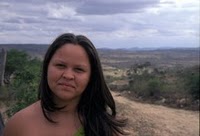As for the topic of oral and written texts, we can say that the
material brings texts which are representative of different spheres of social
activity. It also presents texts of different genres and types, which represent
the formal and informal registers. However, the texts do not present a
diversity of original supports and do not indicate their source, which were
apparently adapted.
As for the written comprehension, we can say that the reading
activities present pre-reading and post-reading activities, promoting the
development of strategies like information location, production of inference,
and general and detailed understanding of the text. Moreover, the activities
count on a plurality of interpretations, explore intertextuality and encourage
the search of texts and information outside of the book. On the other hand, we
could not detect the polyphonic nature of the texts.
Finally, from the linguistic-discursive point of view, we concluded
that besides offering opportunities for the learner to use the language
structures with appropriateness and correction, the material is grammatically
correct and adequate to its thematic content. The linguistic input is
contextualized and it is embedded in varied and authentic discursive practices.
The vocabulary activities stimulate the understanding and use of expressions
and idioms in the student, helping them develop organization and expansion
strategies of their lexical knowledge.




